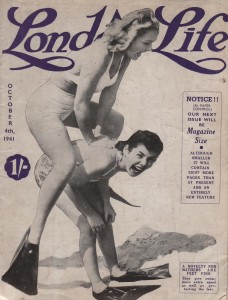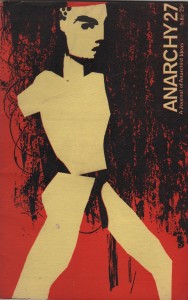‘I have found another way… ‘So wrote fantasy novelist Edith Allonby (1875 – 1905) in a note 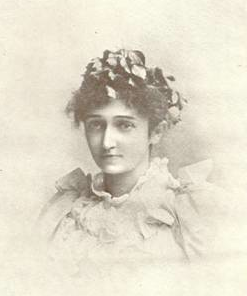 found on her lap following her suicide, aged just thirty, in December 1905. When discovered she was sitting in a comfortable chair dressed in a silk evening gown with fresh flowers in her hair. By her side was an empty bottle of phenol (carbolic acid), the poison of choice (bleach was another) for many suicides in the UK at that time, due to its availability and quick, but painful, action.
found on her lap following her suicide, aged just thirty, in December 1905. When discovered she was sitting in a comfortable chair dressed in a silk evening gown with fresh flowers in her hair. By her side was an empty bottle of phenol (carbolic acid), the poison of choice (bleach was another) for many suicides in the UK at that time, due to its availability and quick, but painful, action.
For Allonby, a schoolmistress from Cartmel, Lancashire whose two previous works of ‘ satirical fantasy ‘, Jewel Sowers (1903) and Marigold
(1905), both set on the imaginary planet of Lucifram, had not sold well, there seemed little choice. In her suicide note she explained that after four years of labour on her latest book , a spiritual fantasy about life and death that she claimed had been given to her by God, her publisher Greening had rejected the manuscript, as had other publishers. ‘I have tried in vain ‘, she wrote,’ …yet shall The Fulfilment reach the people to whom I appeal, for I have found another way…’
That way was an act that would make her posthumous book a sensation at the time, for Greening did change their minds about its publication once the author was dead. It came out in a limited edition, which makes it and her previous two novels, scarce and valuable items today. It is possible that originally all the publishers to whom it was shown simply found the subject matter of The Fulfilmenttoo difficult to deal with. The author herself admitted that her book contained ‘either truth or page upon page of blasphemy ‘. Today, we are more open minded on spiritual matters. [R.M.Healey]
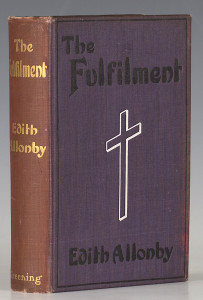

 That’s the English Rex rather than the American James McNeill. This covering letter, which was rescued from the archives of the booksellers Eric and Joan Stephens, was sent on 22 September 1968 from the National Trust property Blickling Hall, Norfolk, by the artist and Rex Whistler fan, John Sutcliffe. This letter bears a characteristic scraper board design by Whistler as a sort of letterhead. That’s how much Whistler meant to Sutcliffe.
That’s the English Rex rather than the American James McNeill. This covering letter, which was rescued from the archives of the booksellers Eric and Joan Stephens, was sent on 22 September 1968 from the National Trust property Blickling Hall, Norfolk, by the artist and Rex Whistler fan, John Sutcliffe. This letter bears a characteristic scraper board design by Whistler as a sort of letterhead. That’s how much Whistler meant to Sutcliffe. was issued by the well-established book dealer Elkin Mathews Ltd in July 1946, just a year or so after the close of the Second World War.
was issued by the well-established book dealer Elkin Mathews Ltd in July 1946, just a year or so after the close of the Second World War.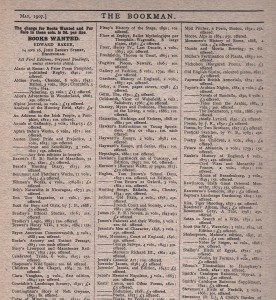 Before we report on the bargains available in May 1908 at Edward Baker’s Great Bookshop in John Bright Street, Birmingham (contrast it with Birmingham City Centre today, where there is not a single second hand bookshop ), let us examine what Mr Baker was prepared to give for top-end first editions in 1907 as advertised in The Bookman for May of that year.
Before we report on the bargains available in May 1908 at Edward Baker’s Great Bookshop in John Bright Street, Birmingham (contrast it with Birmingham City Centre today, where there is not a single second hand bookshop ), let us examine what Mr Baker was prepared to give for top-end first editions in 1907 as advertised in The Bookman for May of that year. magazine Tomorrow, which was devoted to ‘parapsychology, cosmology and traditional studies’. In it a review of Aldous Huxley’s Doors of Perception, which had originally appeared in Asia ten years before, reopens the dispute as to whether an artificially induced state of transcendence is equivalent in quality to a similar state achieved through a religious experience.
magazine Tomorrow, which was devoted to ‘parapsychology, cosmology and traditional studies’. In it a review of Aldous Huxley’s Doors of Perception, which had originally appeared in Asia ten years before, reopens the dispute as to whether an artificially induced state of transcendence is equivalent in quality to a similar state achieved through a religious experience. Found in a pile of papers around a year ago at Jot HQ is this draft of a barely decipherable ( hence the gaps and possible misreadings of words ) and incomplete letter written in pencil on the back of a typed Roneoed page headed ‘ The Association of British Chambers of Commerce/5thOctober, 1942/Parliamentary Bulletin No 462A/Information by question and answer. The draft letter is addressed to ( Ivor ) Brown, author of A Word in your Ear( 1942), a book that explores the history of certain words. The writer cannot be identified from any clues in the letter , though what clues there are might open up paths for Jot fans who are familiar with Cheltenham and the Cotswolds. Any with information are welcome to write in.
Found in a pile of papers around a year ago at Jot HQ is this draft of a barely decipherable ( hence the gaps and possible misreadings of words ) and incomplete letter written in pencil on the back of a typed Roneoed page headed ‘ The Association of British Chambers of Commerce/5thOctober, 1942/Parliamentary Bulletin No 462A/Information by question and answer. The draft letter is addressed to ( Ivor ) Brown, author of A Word in your Ear( 1942), a book that explores the history of certain words. The writer cannot be identified from any clues in the letter , though what clues there are might open up paths for Jot fans who are familiar with Cheltenham and the Cotswolds. Any with information are welcome to write in.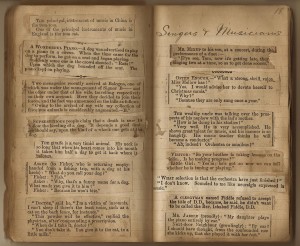

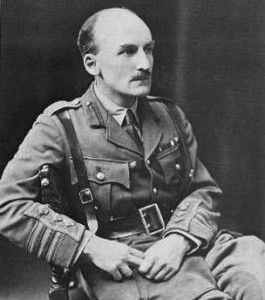 international expert on the use of tanks in warfare who was a strong influence on the German tactician Guderian, but also a Nazi sympathizer who met Hitler, and the only top-ranking officer in the British Army who in 1939 was not invited to join the fight against the Fuhrer. Nicknamed ‘ Boney ‘ by his peers presumably for his combative mien and brilliance as a strategist, and indeed height ( he was only 5’ 4”) Fuller was disliked by many for his high-handedness and argumentative nature. But some of this unpopularity may also have had its origin in his devotion to the occult, on which he wrote articles and books, including a study of Aleister Crowley. Indeed we at Jot 101 first came across his name in the April 1926 issue of The Occult Review, where he contributed a long article entitled ‘ The Black Arts ‘.
international expert on the use of tanks in warfare who was a strong influence on the German tactician Guderian, but also a Nazi sympathizer who met Hitler, and the only top-ranking officer in the British Army who in 1939 was not invited to join the fight against the Fuhrer. Nicknamed ‘ Boney ‘ by his peers presumably for his combative mien and brilliance as a strategist, and indeed height ( he was only 5’ 4”) Fuller was disliked by many for his high-handedness and argumentative nature. But some of this unpopularity may also have had its origin in his devotion to the occult, on which he wrote articles and books, including a study of Aleister Crowley. Indeed we at Jot 101 first came across his name in the April 1926 issue of The Occult Review, where he contributed a long article entitled ‘ The Black Arts ‘. there had been converted to a place of worship. But not any place of worship. Around 19
there had been converted to a place of worship. But not any place of worship. Around 19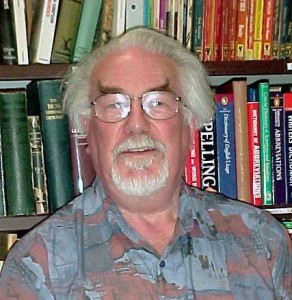
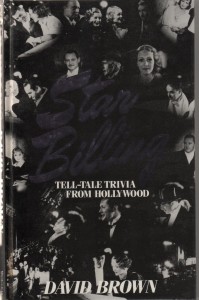
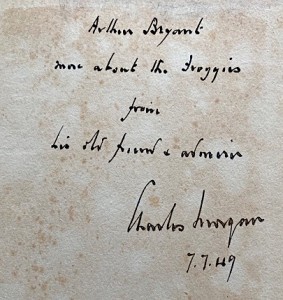
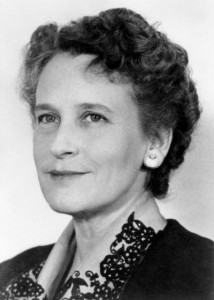
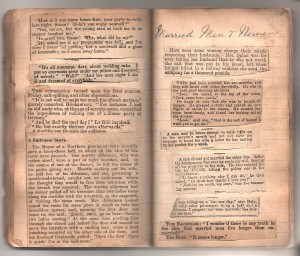 In an earlier Jot we selected at random some pretty witty items from an Edwardian comic’s gag book composed of clippings from newspapers and magazines. Here are some more. Astonishingly, most sound so very modern in their style of humour. None of them contain puns.
In an earlier Jot we selected at random some pretty witty items from an Edwardian comic’s gag book composed of clippings from newspapers and magazines. Here are some more. Astonishingly, most sound so very modern in their style of humour. None of them contain puns. During her twenty-four years in Burma with her husband, an engineer in government service, Lady Charlotte Wheeler-Cuffe (nee Williams) became an intrepid plant-hunter, whose discoveries included various species of rhododendron. On her husband’s retirement in 1922 the couple retired to his ancestral seat at Lyrath, near Kilkenny, and it was here that Lady Charlotte planted some of the exotic plants she had gathered over the years. While in Burma Lady Charlotte had corresponded with friends, including another keen plantswoman, Baroness Prochaya, who also lived at Lyrath and professional botanists, one of whom was Frederick Moore, head of the Botanic Gardens at Glasneven, near Dublin, and on her return to Ireland it would seem that the correspondence continued.
During her twenty-four years in Burma with her husband, an engineer in government service, Lady Charlotte Wheeler-Cuffe (nee Williams) became an intrepid plant-hunter, whose discoveries included various species of rhododendron. On her husband’s retirement in 1922 the couple retired to his ancestral seat at Lyrath, near Kilkenny, and it was here that Lady Charlotte planted some of the exotic plants she had gathered over the years. While in Burma Lady Charlotte had corresponded with friends, including another keen plantswoman, Baroness Prochaya, who also lived at Lyrath and professional botanists, one of whom was Frederick Moore, head of the Botanic Gardens at Glasneven, near Dublin, and on her return to Ireland it would seem that the correspondence continued.